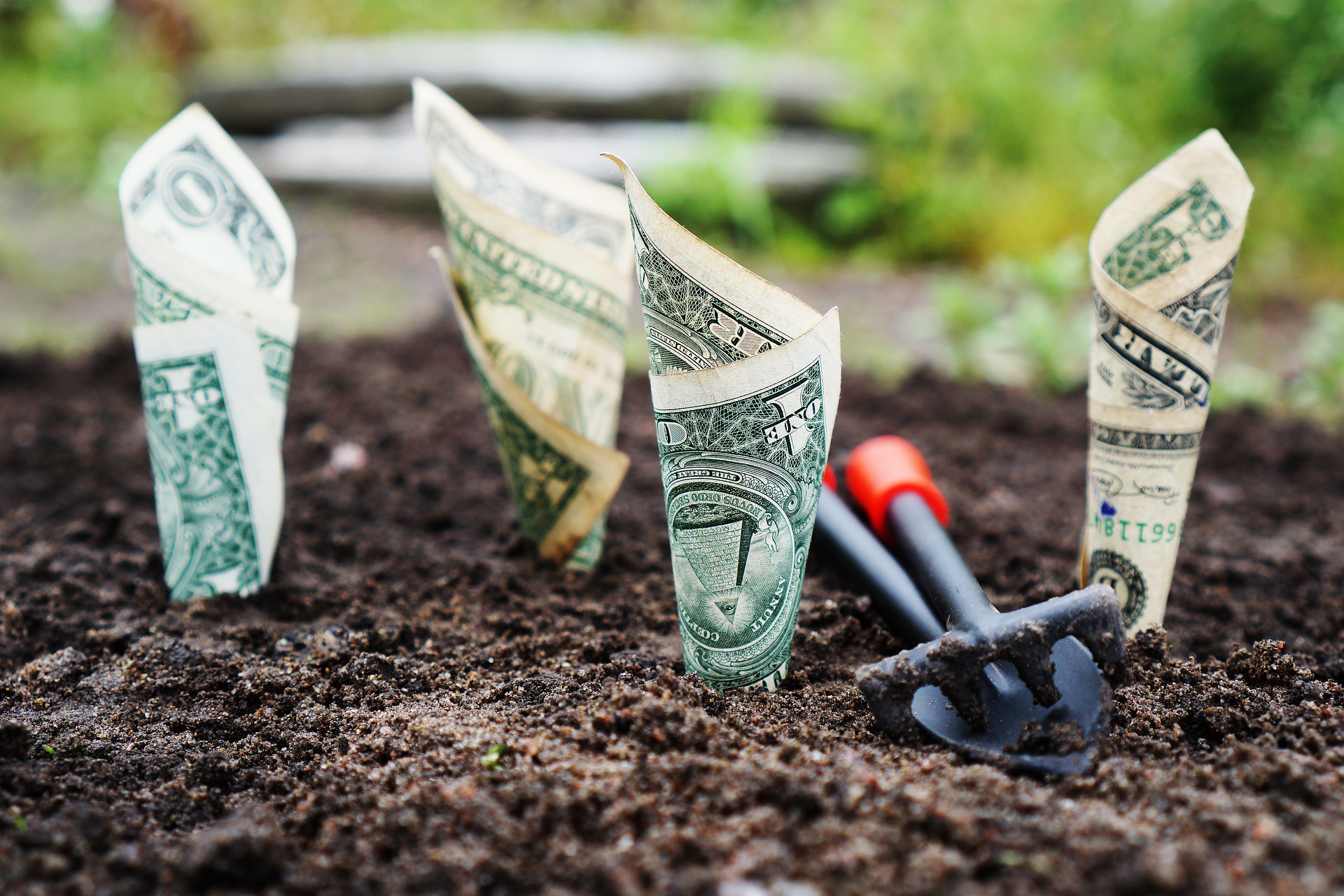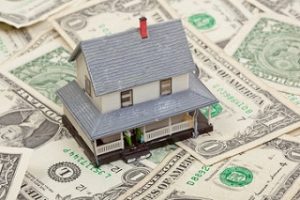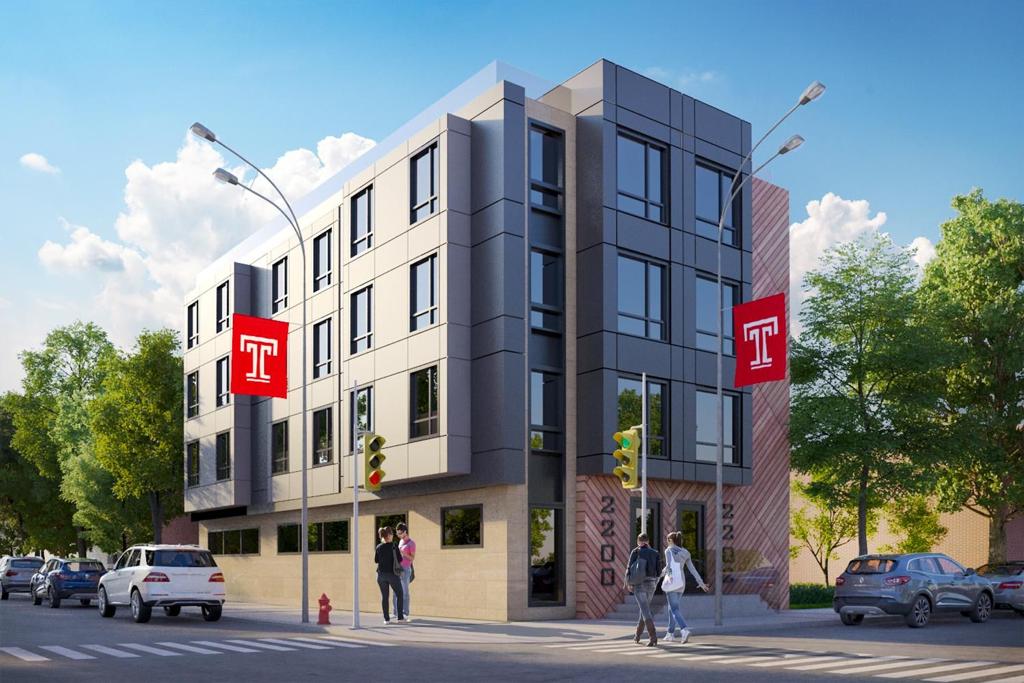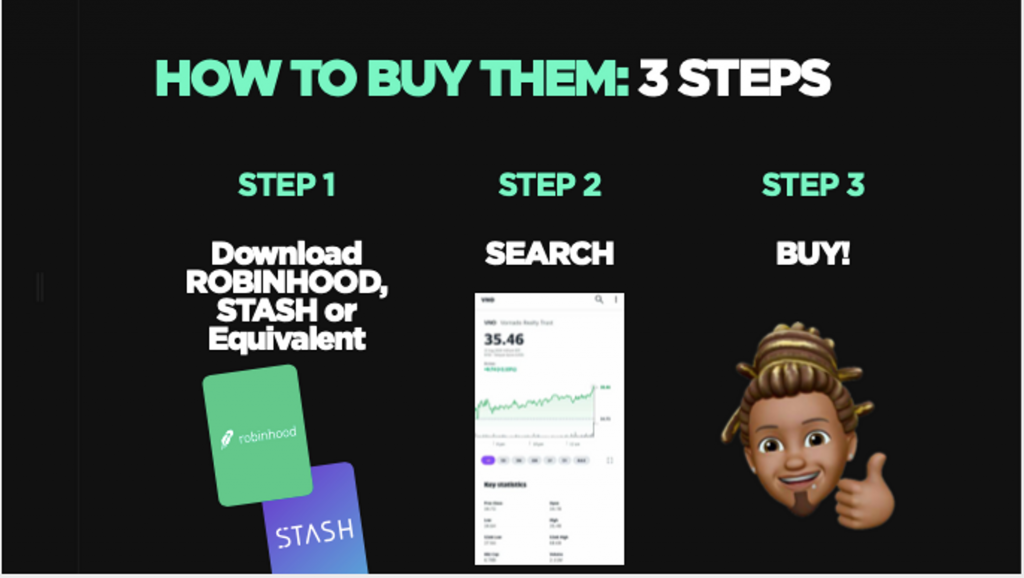Real Estate Investing
What’s The Best Way To Invest $100K?
Published
6 years agoon

Let’s have some fun today and talk about the best way to invest $100,000.
It is a lot of money, but it’s also not a lot. You might have $100k after selling a house, rolling over a 401(k) or IRA, receive it as an inheritance, etc.
So, let’s dive into the best way to invest $100k.
Should I Diversify my $100k Investment?
The first thing to think about is diversification. Should I diversify?
This will depend on my current financial situation. If I have a bunch of other investments elsewhere, then I would consider dropping my $100k into just one investment.
If this was all of my disposable money that I want to invest, then I’d diversify it.
I will assume that this 100k is all the money available, so I’ll diversify it. But, if I ever wanted to dump it all in one place, I could just pick one of these categories and put it all in there.
Allocating My Money

Since I’m going to invest my $100,000 in a diversified fashion, I’m going to plan how to allocate the money first. In order to do that, I need to lay out some options to invest in first. Here are a few.
- Stocks
- Bonds
- Real Estate
- Business Ownership
- Commodities
- Venture Capital
- Crowdfunding (venture capital, real estate, etc)
There are definitely more options but these are probably the most mainstream. I don’t want to dive deep into something that requires a lot of very specific knowledge or experience to get into.
Looking at this list, I’m going to cross a few items off right away.
Crossing Off My List
First, toss bonds. They earn too little and values are inversely related to interest rates. Since interest rates are going up, bond values are going down. Plus, who wants a few percentage points of return when everything else returns so much more?
The next thing I’d toss off is venture capital. The minimum investments are going to be too high and the cashflow is not there. Generally, VC companies have big pay days if they sell or go public, but won’t return any capital in between. I like good cash flowing assets.
The third item I’m going to toss is commodities. It’s an area where you can make a lot of money, but it requires a lot of specialized knowledge that most of us don’t have. Or, it requires a lot of speculation and that isn’t a solid investment strategy.
That leaves stocks, real estate, business ownership, and crowdfunding.

I personally would allocate my money into those 4 categories as follows:
- 40% – Direct Real Estate Ownership
- 20% – Crowdfunded Real Estate
- 20% – Stocks
- 20% – Side Business Venture
1. Crowdfunding:
I’m starting with crowdfunding because it’s easy to get started. I’ll be putting $20,000 of my $100k investment into this.
I’d jump right onto my favorite platform, Fundrise, and drop a portion of my investments right in there. The great part is you can invest with your retirement fund.
Investing With Fundrise
It’s a super simple process so this won’t take long.
I like Fundrise because it’s done well with the money I invested in it back in 2016. My return has average around 10% per year, and there has been some appreciation as well.
So, here’s how to invest with them:
First, go to the Fundrise website and pop your email address in there.
Next, select your plan.
Third, connect your account and fund the investment.
Simple, right?
2. Direct Real Estate Ownership
I’d put 40% of my $100,000 investment money into my own real estate. At the $40k mark that allows me to buy a property that is roughly $200k in value. I can get a good triplex or fourplex at that price.
I think real estate is one of the best ways to invest money, regardless if you have $10,000, $50,000, $100,000 or even more to invest.
I’d expect at least a 15% cash on cash return and another 2-3% per year in appreciation. So, this $40k should earn around $7,000 per year for me.
Getting started in real estate is a little bit more challenging than just dropping money into crowdfunding. You can get started making offers in the next 30 days by checking this course out.
There are 4 things you need to learn in order to succeed at investing in real estate:
-
Find a Deal
-
Run the Numbers
-
Finance the Property
-
Fill it With Good Tenants
Finding Good Real Estate Deals

There are really 3 ways to find good deals – MLS, Direct Mail, or Online Lead Generation.
Of course, some deals are found by worth of mouth, knocking on doors, etc. But the 3 methods I mentioned are the only 3 that are truly scalable.
Finding Deals on the MLS
I’m not going to go into this too much, but, here are the basics.
First, find a good real estate agent. I like to use Agents Invest for a few reasons. First, the owner of the company is a real estate investor and she finds and trains agents around the country how to work with investors.
Second, it’s totally free to the investor.
Third, her agents often find deals that are not on the MLS, so it saves a lot of work for me.
Direct Mail Marketing
If you want to cut out the agent and go direct to the seller, a good way is with direct mail marketing.
In a nutshell, you buy a list of addresses, put together letters, and mail to them. Then, you wait for calls to come in.
Every time I’ve done this, I get about a 3% call back rate. So, if I mail 1,000 addresses, about 30 call me. Of that 30, maybe 3 are good deals and of those 3 I might get one.
In some markets, it’s more competitive so the numbers may be lower.
I go into a lot more detail on this method in my course on creating deal flow.
Online Lead Generation
Most questions start with a google search. Everything from “how do I avoid foreclosure” to “how do I sell my house fast” are all questions that people go to the internet to solve.
So, by creating that resource online, you might be the one they contact!
I use Investor Carrot for my online lead generation sites. Getting started with them is super simple too!
Simply go to the Investor Carrot site and pop in your email address.
Go through the prompts and set up your free trial.
Then start building content!
It does take about 3-6 months to generate any movement on Google, so be patient when first getting started.
Running the Numbers
This is the hardest part and there is no way we can get into it all here. But, we’ll cover the 4 basics you need to know, which are:
-
Determine After Repaired Value
-
Estimate the Rehab Costs
-
Know The Rents
-
Budget for Ongoing Operational Costs
Determining After Repaired Value
After repair value, or ARV is what the property will be worth after any necessary repairs are completed. Hopefully, the ARV is higher than whatever you are purchasing it for.
The goal is to buy it for a certain price, do some work, then have the ARV be significantly more than what you put into it.
The best way to estimate the ARV is to do a comparative market analysis (watch this video and subscribe)
Estimate Rehab Costs
There are a lot of rules of thumb and none of them apply everywhere. It also depends a lot on the size of the property in question.
The best way to estimate costs is to bring a contractor with you to give a rough idea.
You could use the $25/foot method which assumes a full interior upgrade costs about $25/foot, but that is fairly substantial.
There is also the $3,500 – $7,000 rule for interior upgrades on smaller apartments.
or…
You get the point. It’s hard to estimate!
Know Your Rents
Similar to doing a comparative market analysis, you’ll want to look at comparable rents in the area.

Here are the keys to estimating rents:
First, find 3 or 4 apartments for rent in the area that have similar characteristics such as age, amenities, size, number of bedrooms, etc.
List their rent prices from cheapest to most expensive. If one is way out of alignment with the others, you want to know why. If it’s an outlier, I’d discard it.
Look at the remaining comparable apartments to see if they have rents that are similar then simply average them if it’s true. If they have a wide variety, then look to see which one is most like yours. Then, go find more apartments for rent that are more closely aligned with yours.
Operational Costs
This is one of the biggest mistakes that most new investors make – they forget to budget properly for operational costs.
The easiest thing to do is to simply use the 50% rule. Basically, this says that 50% of your income will go your your expenses (everything except the principal and interest payments).
3. Create a Side BusinessI’d take $20,000 and invest it in a side project.
While this is not an entirely passive investment, it can become passive if it grows. Additionally, if it’s set up in a smart way, I can dedicate just a little bit of time to hopefully get outsized returns for the time commitment.
Honestly, not investment starts as completely passive, not even rental property. The key is to set it up well and have good systems in place.
There are two ways to go about this. I could start something completely unrelated to my other investments such as an eBay or Amazon FBA site. The other option is to start something that has synergy with one of my other investments.
Me personally, I’d rather have a business that ties in with other things I’m doing. So, I’d start a business related to real estate, but that isn’t actually investing in real estate.
4. Investing in Stocks
This is the most boring of all the options and the most well understood, so I’ve put it last.

I would invest the remaining money into a low cost index fund that tracks one or more of the major indices such as the DOW, Nasdaq, or S&P 500.
I’d probably divide my total investment between 2 or all 3 of them.
There are other low cost ETFs or funds that mirror other indices in the US or around the world, so you can get creative here and just go with the ones you think will perform the best.
For me personally, I like the S&P 500.
I’ve covered a lot of different ways to invest $100k. Like I said before, it really depends on your personal situation and risk tolerance.
It also depends on any other investments you might currently have as well.
This article originally appeared on idealrei.com. Read the full article here.
You may like
Real Estate Investing
5 Recession-Proof Investments for Your Portfolio
Published
3 years agoon
May 3, 2023
By Sheryl Chapman
As we all know, the economy can be unpredictable at times. Recession is a common phenomenon that can affect the investments in your portfolio.
But don’t worry, there are some sectors that are likely to perform well—even during a recession. Here are five recession-proof investments that you can consider adding to your portfolio.
(Editor’s note***********:************ If you wanna learn how to start investing for retirement, check out the free lessons inside the academy! 📺)*
1. Consumer staples
Consumer staples are products that are essential to our daily lives, such as food, household goods, and personal care items.
These products are in constant demand, regardless of the economic climate. Companies that produce these items, such as Procter & Gamble and Coca-Cola, are considered recession-proof investments.
These companies have a stable revenue stream that can weather economic downturns.
2. Utilities
Utilities are another recession-resistant investment. People need electricity, gas, and water, regardless of the state of the economy.
Utility companies, such as Duke Energy and American Electric Power, have a steady stream of revenue and provide investors with a reliable source of income.
3. Healthcare
The healthcare industry is recession-proof because it provides essential services that people cannot do without. Companies that provide healthcare services or products, such as Johnson & Johnson and UnitedHealth Group, are likely to remain profitable during a recession.
4. Gold
Gold is a safe-haven investment that many investors turn to during times of economic uncertainty. Gold prices tend to rise during recessions because it is seen as a store of value. Investors can buy physical gold, gold ETFs, or invest in gold mining stocks.
GUIDE: 3 Ways To Invest In Gold In 3 Minutes Or Less 🔑📲
5. Treasury bonds
Treasury bonds are considered to be one of the safest investments during a recession.
These bonds are issued by the US government and are backed by the full faith and credit of the government. Treasury bonds provide a fixed income and are considered to be a low-risk investment.
In conclusion, these five investments are considered to be recession-proof because they provide essential products or services that people cannot do without.
Adding these investments to your portfolio can provide stability during times of economic uncertainty.
Real Estate Investing
5 Tips To Pricing Your Airbnb Listing For Maximum Profits
Published
3 years agoon
May 2, 2023
Airbnb has revolutionized the travel industry by providing an affordable and unique way for travelers to experience different destinations.
With over 7 million listings worldwide, it’s safe to say that Airbnb has become one of the most popular ways for travelers to find lodging.
However, as a host, one of the most challenging decisions you’ll face is determining the right price for your listing.
Pricing your Airbnb listing correctly is critical to your success as a host, as it can make or break your profitability.
Here are some tips to help you price your Airbnb listing for maximum profit:
Know Your Market
Before you set your price, it’s essential to research the market in your area. Look at other listings in your neighborhood, paying attention to the size of the property, amenities, and location. Check the availability of your competitors and the average price they charge. This information will help you determine your pricing strategy and ensure that your listing is competitive.
Consider Seasonal Demand
Seasonal demand plays a significant role in the pricing of your Airbnb listing. During peak seasons, such as holidays, festivals, and major events, you can charge higher rates. Conversely, during low seasons, you’ll need to lower your prices to attract guests. Keep track of events happening in your area and adjust your prices accordingly.
Offer Discounts
Offering discounts is an effective way to attract guests and increase your occupancy rate. Consider offering discounts for extended stays, early bookings, or last-minute reservations. You can also offer discounts to guests who leave a positive review or refer new guests to your listing.
Calculate Your Costs
To ensure that your pricing strategy is profitable, you need to calculate your costs. Take into account expenses such as cleaning fees, utilities, maintenance, and taxes. Factor in your time and effort as well. Your goal is to set a price that will cover all your costs while still allowing you to make a profit.
Be Flexible
Finally, be flexible with your pricing strategy. Test different prices and see how they affect your occupancy rate and profitability. Monitor your competition regularly and adjust your prices accordingly. Remember that the market is constantly changing, and your pricing strategy needs to adapt to stay competitive.
In conclusion, pricing your Airbnb listing for maximum profit is a crucial aspect of your success as a host. By researching your market, considering seasonal demand, offering discounts, calculating your costs, and being flexible, you can set the right price for your listing and maximize your profitability.
Happy hosting!
Real Estate Investing
5 Skyscrapers You Can Own Today With $5 Or Less
Published
3 years agoon
April 28, 20235 REITs that own iconic buildings you can buy today

Real Estate Investment Trusts (REITs) are companies that own and operate income-generating real estate properties.
Investing in REITs has become an increasingly popular way to own a piece of the real estate market without having to buy individual properties.
And you can buy them in the next 5 minutes on the NYCE app…with $5 or less.
Here are five REITs that own iconic buildings across the United States that you can invest in today:
- Empire State Realty Trust, Inc. (ESRT) – ESRT owns the famous Empire State Building in New York City, as well as several other properties in the city.
- Vornado Realty Trust (VNO) – VNO owns the iconic 555 California Street building in San Francisco, which was once the tallest building on the West Coast.
- Boston Properties, Inc. (BXP) – BXP owns several iconic buildings in the United States, including the John Hancock Tower in Boston and the Salesforce Tower in San Francisco.
- SL Green Realty Corp. (SLG) – SLG owns several iconic properties in New York City, including One Vanderbilt, which is currently the fourth-tallest building in the city.
- Macerich Company (MAC) – MAC owns several high-end shopping centers across the United States, including the iconic Santa Monica Place in California.
************************************************************************************************LEARN: How to own real estate with $1000 or less.
Investing in REITs can provide diversification and potentially higher returns than investing in individual properties. However, as with any investment, it is important to do your research and understand the risks involved.
Top 5 Best Investment Strategies To Survive A Recession
The Top 10 Investment Opportunities To Capitalize On During A Recession
3 Gold Mining Stocks To Buy Today 📲
Ad 1
Trending

You’ve reached your free article limit.
Continue reading by subscribing.
Already a subsciber? Login >
Go back to Homepage >





You must be logged in to post a comment Login